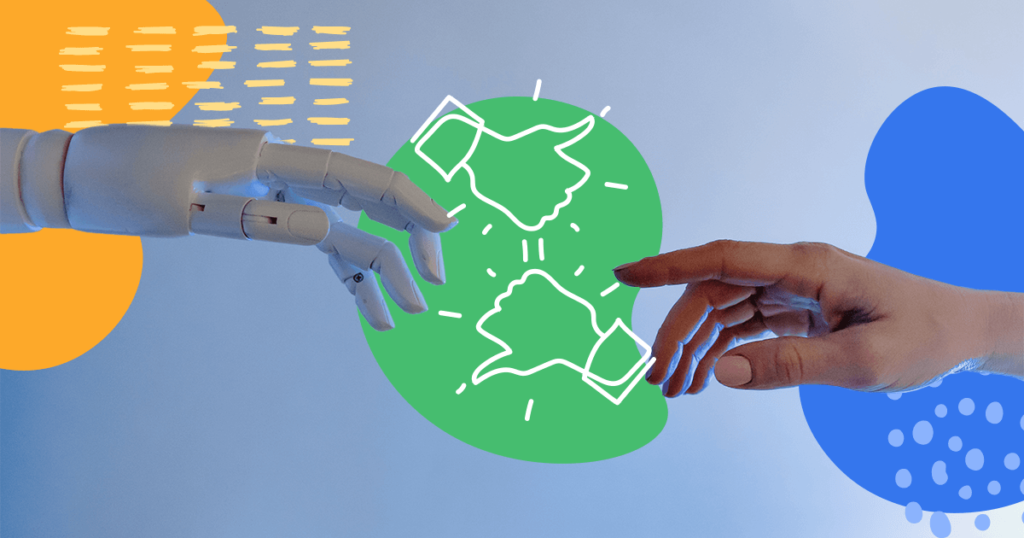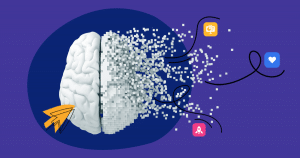It is undeniable to say that the digital market is constantly changing and that we are used to it, but in recent months Artificial Intelligence (AI) and its impacts on those who work online have kept many marketing professionals and content creators awake at night.
That’s because while AI systems have become an integral part of our daily lives and have transformed the way people interact with technology, they are susceptible to biases that can lead to unintended consequences — like any human creation.
So, it’s no surprise that in a recent HubSpot report, marketers, sales professionals, and customer service personnel have expressed hesitation in utilizing AI tools due to the possibility of biased information being produced.
But don’t get me wrong: I am not saying that the use of machine learning is harmful for these professionals, but I want to emphasize the importance of using human supervision and correct integrations to avoid incorrect and biased information in content production.
Therefore, in this article, I want to delve deeper into the concept of AI bias, explore real examples of bias in AI systems, and discuss strategies for marketers and content creators to mitigate potential harm caused by the use of this technology. So first things first: what is AI Bias?
What is AI Bias?
If we look for “bias” in the most famous and used search engine in the world, we find the following definition: “a tendency to believe that some people, ideas, etc., are better than others that usually results in treating some people unfairly.”
So if we consider that, we can say that AI bias refers to the systematic and possible unfair favoritism or discrimination exhibited by artificial intelligence systems when providing data about a particular topic.
These biases can arise from various sources, including biased training data, flawed algorithms, or improper implementation. This happens because AI systems are programmed to learn from existing data that are available online and make decisions based on patterns and correlations within that data.
So if the training data contains inherent biases or reflects societal prejudices, the AI system may inadvertently perpetuate and amplify those biases when making decisions.
How can AI be biased?
Research studies and investigations have shed light on the presence and impact of AI bias. For instance, a new paper from MIT and Stanford University found that facial recognition systems from prominent tech companies had higher error rates for women and people with darker skin tones.
The experiments revealed that the error rates in determining the gender of light-skinned men were consistently below 0.8 percent, while for darker-skinned women, the error rates were significantly higher, exceeding 20 percent in one case and surpassing 34 percent in two other cases.
With this tendency to misidentify these individuals more often, Artificial Intelligence systems can lead to potential discrimination in areas such as law enforcement and hiring processes, since such techniques can (and often are) used to identify possible criminals and those wanted by law enforcement.
The study’s findings also raise concerns about the training and evaluation of the neural networks used in these programs, highlighting the importance of examining biases in facial analysis systems, and indicate further investigation into possible disparities in other AI applications.
Another example is when we analyze the Artificial Intelligence used in credit analysis for loans.
Loan approval algorithms, also known as credit scoring algorithms, are often used by financial institutions to assess the creditworthiness of loan applicants — and if the algorithm assigns higher risk scores based on factors associated with minority groups, individuals in these communities may have difficulty accessing loans or be subject to unfavorable lending terms, perpetuating systemic inequalities and limiting economic opportunity.
On this matter, Aracely Panameño, director of Latino affairs for the Center for Responsible Lending, says that “The quality of the data that you’re putting into the underwriting algorithm is crucial. (…) If the data that you’re putting in is based on historical discrimination, then you’re basically cementing the discrimination at the other end.”
And when it comes to job search algorithms, the concern is that biases in the algorithm could lead to unfair advantages or disadvantages for certain groups of candidates.
Another investigation revealed that Google’s job search algorithm displayed gender bias, favoring higher-paying executive positions in search results for male candidates — so, if a job search algorithm consistently ranks higher-paying executive positions predominantly for male candidates, it could perpetuate existing gender disparities in the job market.
How to mitigate AI bias?
Artificial Intelligence is already a reality in the daily life of marketers and content creators, and avoiding it is not a good decision. In addition to checking all the material provided by machine learning, some points are essential to avoid and mitigate AI bias:
1. Provide diverse and representative training data: it is crucial to ensure that AI systems are trained on diverse and representative datasets to mitigate biases, including data from various demographics, backgrounds, and perspectives. By broadening the dataset, AI models can learn to make fairer and more inclusive decisions.
2. Conduct constant evaluations and rigorous testing: AI systems must undergo frequent and thorough checks and tests to identify and correct possible biases. Independent audits can be performed to assess the performance and possible biases of AI models, which helps identify any unintended discriminatory patterns and take corrective action. This monitoring should involve reviewing feedback, user reports, and performance data to ensure fair results and correct information.
3. Human oversight and intervention: this plays a critical role in ensuring the reliability, fairness, and ethicality of AI-generated outcomes. While AI can automate processes and provide efficient results, human intervention provides the necessary checks and balances to challenge biases, evaluate outcomes, and align decisions with ethical principles. Humans bring contextual understanding, domain expertise, and ethical reasoning to the table, enabling them to critically evaluate AI-generated results, identify and mitigate biases, and navigate complex and novel scenarios that AI may struggle with — establishing accountability, promoting user trust, and ensuring that AI systems are designed and utilized in a responsible and beneficial manner.
So, we can see that AI bias poses a significant challenge in our increasingly digitized world, but all is not lost: dealing with AI bias requires a multifaceted approach, involving diverse training data, rigorous evaluation, ongoing monitoring, ethical frameworks, and human intervention.
By implementing these strategies, I’m sure marketers and content creators can contribute to the development of fair and inclusive AI systems, mitigating possible harm and promoting a more equal future!
Do you want to continue to be updated with Marketing best practices? I strongly suggest that you subscribe to The Beat, Rock Content’s interactive newsletter. We cover all the trends that matter in the Digital Marketing landscape. See you there!







